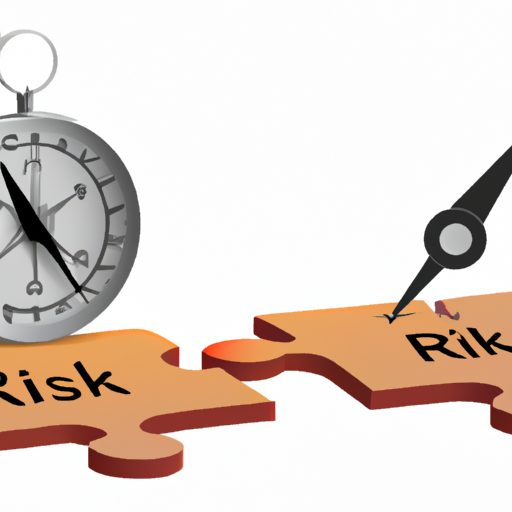How Do We Align Our Continuity Planning With Our Risk Appetite?
Have you ever wondered how to align your continuity planning with your risk appetite? In this article, we will explore practical strategies and insights on how to effectively merge these two crucial aspects of business management. By understanding the connection between continuity planning and risk appetite, you will be better equipped to navigate uncertainties and ensure the long-term success of your organization. So, let’s dive in and discover the key principles that will help you align your business strategy with your risk appetite.
Understanding Risk Appetite and Continuity Planning
Risk appetite refers to the amount of risk an organization is willing to accept in pursuit of its objectives. It can be seen as a balance between taking necessary risks to achieve success and avoiding excessive risks that may jeopardize the organization’s stability. Continuity planning, on the other hand, involves developing strategies and processes to ensure the organization can continue operating in the face of potential disruptions or crises. It encompasses various aspects such as risk assessment, business impact analysis, and the development of contingency plans.
Defining risk appetite
Risk appetite can vary from one organization to another, depending on factors such as industry, culture, and strategic goals. It is important for organizations to clearly define their risk appetite to provide guidance to decision-makers and stakeholders. This involves determining the level of risk the organization is willing to tolerate, the types of risks it is willing to take, and the potential consequences of those risks. By defining risk appetite, organizations can establish a framework for managing and evaluating risks.
Defining continuity planning
Continuity planning involves preparing for and responding to potential disruptions or crises that could impact the organization’s ability to operate. It is a proactive approach to ensure that essential functions can continue despite various risks. Continuity planning encompasses activities such as risk assessment, business impact analysis, developing response and recovery plans, and testing and exercising those plans. It aims to minimize the impact of disruptions and enable the organization to recover quickly and efficiently.
Importance of aligning risk appetite with continuity planning
Aligning risk appetite with continuity planning is crucial to ensure that the organization’s strategies and actions are consistent with its risk tolerance. When risk appetite and continuity planning are not aligned, it can lead to either excessive caution or taking on excessive risk. If an organization’s risk appetite is too conservative, it may miss out on opportunities for growth and innovation. On the other hand, if risk appetite exceeds the organization’s capacity to manage risks, it may face significant losses and damage to its reputation. By aligning risk appetite with continuity planning, organizations can strike a balance between risk-taking and risk mitigation to achieve their objectives effectively.
Assessing Risk Appetite
Identifying and understanding risk tolerance
Assessing risk appetite begins with understanding the organization’s risk tolerance. Risk tolerance refers to the level of risk the organization is willing to accept in pursuit of its objectives. It involves identifying the organization’s comfort level with various types of risks and its willingness to accept potential consequences. This can be determined through surveys, interviews, and workshops involving key stakeholders at different levels of the organization. Understanding risk tolerance helps establish a baseline for defining risk appetite.
Determining risk appetite framework
Once risk tolerance is understood, it is important to establish a risk appetite framework. This framework defines the boundaries within which the organization is willing to operate in terms of risk-taking. It involves setting quantitative and qualitative measures to guide decision-making and prioritize risks. For example, the framework may establish limits on financial exposure, define acceptable levels of regulatory compliance risk, and identify specific thresholds for reputational risk. The risk appetite framework provides a clear and consistent approach to managing risks across the organization.
Involving key stakeholders in risk appetite assessment
Assessing risk appetite should involve key stakeholders from different functional areas and levels of the organization. This ensures that diverse perspectives are considered and that risk appetite aligns with organizational goals and objectives. Involving stakeholders also promotes ownership and buy-in, as they have a better understanding of the risks they face and can contribute valuable insights. Regular communication and collaboration with stakeholders throughout the risk appetite assessment process help build a shared understanding of risk and continuity planning.
Evaluating Continuity Planning
Reviewing current continuity planning strategies
To assess the alignment of risk appetite with continuity planning, it is essential to review the organization’s current continuity planning strategies. This involves evaluating the effectiveness of existing plans and identifying any gaps or areas for improvement. The review should consider factors such as the organization’s risk profile, regulatory requirements, and industry best practices. By examining current strategies, organizations can determine whether their continuity plans adequately reflect their risk appetite and address potential vulnerabilities.
Assessing effectiveness of existing plans
Once current strategies are reviewed, it is important to assess their effectiveness in achieving continuity objectives. This assessment involves evaluating the level of preparedness, the ability to respond to disruptions, and the speed of recovery. It also considers the organization’s performance in maintaining critical functions during disruptions. By assessing the effectiveness of existing plans, organizations can identify strengths to build upon and weaknesses to address.
Identifying gaps and areas of improvement
In the process of evaluating continuity planning, organizations should identify any gaps and areas of improvement. This includes identifying potential vulnerabilities, dependencies, and bottlenecks that may hinder the organization’s ability to operate during disruptions. By identifying these gaps, organizations can prioritize actions to enhance their resilience and align their continuity planning with their risk appetite. This may involve updating plans, investing in additional resources, or implementing new technologies or processes.
Identifying Key Risks
Conducting risk assessment
Identifying key risks begins with conducting a comprehensive risk assessment. This involves systematically identifying and analyzing potential risks, both internal and external, that could impact the organization’s operations. Risk assessment methods may include qualitative and quantitative analysis, scenario planning, and benchmarking against industry peers. By conducting a thorough risk assessment, organizations can gain a clear understanding of the risks they face and their potential impact.
Determining potential impact of risks
In addition to identifying risks, it is important to determine their potential impact on the organization. This involves assessing the likelihood and severity of each risk and considering their potential interdependencies. Likelihood refers to the probability of a risk event occurring, while severity refers to the extent of the impact if the risk materializes. By assessing the potential impact of risks, organizations can prioritize them based on their significance and develop targeted mitigation strategies.
Prioritizing risks based on their likelihood and severity
Once risks are identified and their potential impact is determined, organizations should prioritize them based on their likelihood and severity. This helps allocate resources effectively and enables organizations to focus on mitigating the most significant risks. Prioritization can be done through risk scoring or using a risk matrix that categorizes risks based on their likelihood and severity. By prioritizing risks, organizations can develop targeted mitigation strategies and align them with their risk appetite and continuity planning.
Aligning Risk Appetite with Continuity Objectives
Establishing continuity objectives
To align risk appetite with continuity planning, organizations need to establish clear continuity objectives. These objectives define what the organization aims to achieve in terms of maintaining essential functions during disruptions. Continuity objectives may include minimizing downtime, ensuring employee safety, safeguarding critical data, and protecting the organization’s reputation. By establishing continuity objectives, organizations can align their risk appetite and continuity planning to focus on the most critical areas.
Mapping risk appetite to specific objectives
Once continuity objectives are established, it is important to map risk appetite to each specific objective. This involves considering the level of risk the organization is willing to accept for each objective and the potential consequences of taking or avoiding certain risks. For example, if the objective is to minimize downtime, the risk appetite may lean towards proactive measures to prevent disruptions rather than reactive measures to restore operations. By mapping risk appetite to specific objectives, organizations can ensure their continuity planning is in line with their defined risk appetite.
Ensuring risk appetite aligns with business goals
Aligning risk appetite with continuity planning also requires considering the organization’s broader business goals. Risk appetite should not be viewed in isolation but in the context of the organization’s strategic objectives. It is important to ensure that the level of risk the organization is willing to accept aligns with its overall business strategy. For example, if the organization aims to be an industry leader in innovation, its risk appetite may be higher to encourage experimentation and explore new opportunities. By aligning risk appetite with business goals, organizations can foster a risk-aware culture and create a competitive advantage.
Developing Risk-Informed Continuity Strategies
Designing strategies to mitigate identified risks
Developing risk-informed continuity strategies involves designing plans and solutions to mitigate the identified risks. This includes identifying and implementing measures to reduce the likelihood and impact of risks. Strategies may involve enhancing infrastructure, implementing redundancy measures, diversifying supply chains, or developing alternative communication channels. By designing strategies to mitigate identified risks, organizations can ensure their continuity planning is proactive and tailored to their risk appetite.
Considering risk appetite during strategy development
Risk appetite should be considered throughout the development of continuity strategies. This ensures that the strategies are aligned with the organization’s willingness to accept risk. It involves evaluating the potential risks and their potential consequences against the established risk appetite framework. By considering risk appetite, organizations can avoid excessive caution or unnecessary risk-taking in their continuity strategies. This also helps ensure that resources are allocated effectively to address the most significant risks.
Incorporating risk monitoring and evaluation mechanisms
Risk monitoring and evaluation are essential components of risk-informed continuity strategies. This involves establishing mechanisms to regularly assess the effectiveness of continuity measures, identify emerging risks, and adjust strategies accordingly. Risk monitoring can involve regular reviews, audits, and assessments to ensure that continuity plans remain relevant and effective. By incorporating risk monitoring and evaluation mechanisms, organizations can adapt to changing circumstances and maintain alignment with their risk appetite.
Implementing Risk-Adjusted Continuity Plans
Creating action plans based on identified strategies
Once risk-informed continuity strategies are developed, organizations should create action plans to implement these strategies. Action plans outline the specific steps, responsibilities, and timelines required to execute the continuity strategies. They break down the strategies into actionable tasks and allocate resources accordingly. By creating action plans, organizations can ensure a structured and coordinated approach to implementing the identified measures.
Aligning resources and responsibilities
Implementing risk-adjusted continuity plans requires aligning resources and responsibilities. This involves ensuring that the necessary resources, such as funding, technology, and personnel, are available to support the execution of the action plans. It also involves assigning clear roles and responsibilities to individuals or teams involved in the continuity planning and response. By aligning resources and responsibilities, organizations can enhance accountability and enable effective execution of the plans.
Integrating risk tolerance in plan execution
During the execution of risk-adjusted continuity plans, it is important to consider risk tolerance. This involves making decisions and taking actions that are within the organization’s established risk appetite. It requires evaluating the potential risks and their potential impact before making decisions or implementing changes. By integrating risk tolerance in plan execution, organizations can ensure that their actions align with their desired level of risk-taking, while also being responsive to potential threats.
Monitoring and Reporting
Establishing monitoring mechanisms for key risks
Monitoring key risks is essential to ensure that the organization’s continuity plans remain effective and aligned with its risk appetite. This involves establishing monitoring mechanisms to track and evaluate the identified risks and their potential impact. Monitoring can be done through regular assessments, data analysis, and the use of Key Risk Indicators (KRIs). By establishing monitoring mechanisms, organizations can detect emerging risks, assess the effectiveness of mitigation measures, and make informed decisions to maintain alignment with risk appetite.
Regularly reviewing and updating continuity plans
Continuity plans should be regularly reviewed and updated to reflect changes in the organization’s risk profile and strategic objectives. Reviewing continuity plans involves evaluating their effectiveness, identifying areas for improvement, and incorporating lessons learned from previous disruptions. This review should be done in collaboration with relevant stakeholders to ensure a comprehensive and accurate assessment. By regularly reviewing and updating continuity plans, organizations can adapt to new challenges and maintain alignment with their risk appetite.
Reporting on risk exposure and associated strategies
Regular reporting on risk exposure and associated strategies enhances transparency and accountability within the organization. This involves providing stakeholders with information on the organization’s risk profile, risk appetite, and the effectiveness of its continuity plans. Reporting may include key risk indicators, incident reports, and updates on the implementation of risk mitigation strategies. By reporting on risk exposure and associated strategies, organizations can demonstrate their commitment to managing risks effectively and maintain trust with stakeholders.
Continuous Improvement
Analyzing the effectiveness of implemented plans
Continuous improvement is crucial for maintaining alignment between risk appetite and continuity planning. It involves analyzing the effectiveness of implemented plans and identifying areas for improvement. This analysis can be done through post-incident reviews, performance metrics, and feedback from stakeholders involved in plan execution. By analyzing the effectiveness of implemented plans, organizations can identify strengths and weaknesses and make informed decisions to enhance their resilience.
Identifying lessons learned and areas for improvement
To continuously improve, organizations should identify lessons learned from previous disruptions and areas for improvement. This involves collecting feedback from employees, customers, and other stakeholders involved in the continuity planning and response. Lessons learned may include identifying gaps in resources, communication breakdowns, or weaknesses in the existing strategies. By identifying lessons learned and areas for improvement, organizations can enhance their preparedness and responsiveness to future disruptions.
Integrating feedback into future risk appetite assessments
Feedback from lessons learned and continuous improvement efforts should be integrated into future risk appetite assessments. This ensures that the risk appetite framework remains up-to-date and aligned with the organization’s evolving risk landscape. By integrating feedback into risk appetite assessments, organizations can strengthen their risk governance and decision-making processes, and enhance their overall resilience.
Role of Leadership and Communication
Engaging leadership in risk appetite discussions
Leadership plays a crucial role in aligning risk appetite with continuity planning. Engaging leadership in risk appetite discussions ensures that their perspectives and strategic objectives are considered when defining risk tolerance and establishing continuity objectives. Leadership should provide clear guidance on risk appetite and communicate it effectively to stakeholders at all levels of the organization. By engaging leadership in risk appetite discussions, organizations can foster a risk-aware culture and create a shared understanding of risk.
Ensuring clear communication of risk appetite to stakeholders
Clear communication of risk appetite is essential to ensure that all stakeholders understand and align with the organization’s risk tolerance. Communication should be transparent, consistent, and tailored to different stakeholder groups. It should provide clear explanations of risk appetite, its implications, and its relationship to continuity planning. By ensuring clear communication of risk appetite, organizations can reduce ambiguity and enhance stakeholder engagement and support.
Aligning risk appetite across different business units
Aligning risk appetite across different business units is critical for maintaining consistency and effectiveness in continuity planning. Business units may have unique risk profiles and objectives, but they need to operate within the organization’s overall risk appetite. This requires collaboration and coordination among business units to ensure their specific strategies and actions align with the organization’s risk tolerance. By aligning risk appetite across different business units, organizations can foster a cohesive and resilient approach to managing risks.








